ВИРТУАЛЬНАЯ ОБРАЗОВАТЕЛЬНАЯ СРЕДА КАК СРЕДСТВО ПОВЫШЕНИЯ ЭФФЕКТИВНОСТИ ПРОГРАММ ОСНОВНОГО И ДОПОЛНИТЕЛЬНОГО ОБРАЗОВАНИЯ В ВУЗЕ
Экарева И.Л.1, Пригожина К.Б.2, Тростина К.В.3
1Кандидат исторических наук, доцент, заведующая кафедрой иностранных языков №1, Российский экономический университет им. Г.В. Плеханова,
2ORCID 0000-0001-6376-5615, кандидат педагогических наук, доцент кафедры иностранных языков №1, Российский экономический университет им. Г.В. Плеханова,
3ORCID0000-0001-9274-0230 , старший преподаватель кафедры иностранных языков №1, Российский экономический университет им. Г.В. Плеханова
ВИРТУАЛЬНАЯ ОБРАЗОВАТЕЛЬНАЯ СРЕДА КАК СРЕДСТВО ПОВЫШЕНИЯ ЭФФЕКТИВНОСТИ ПРОГРАММ ОСНОВНОГО И ДОПОЛНИТЕЛЬНОГО ОБРАЗОВАНИЯ В ВУЗЕ
Аннотация
Публикация анализирует роль дистанционных образовательных технологий в обеспечении доступности и конкурентоспособности программ основного и дополнительного образования. Целью статьи является определить на примере реализации дистанционных образовательных технологий в неязыковом вузе возможные условия и пути создания единого виртуального образовательного пространства в условиях преемственности в трехступенчатой системе высшего образования (бакалавриат-магистратура-аспирантура), а также при реализации программ дополнительного образования в вузе. Результатом исследования явился анализ востребованности программ дополнительного образования и увеличение спроса на эти программы при условии организации образовательного процесса с использованием дистанционных технологий на примере создания единой виртуальной образовательной среды в вузе, предложена модель электронного обучающего комплекса как средства обучения. Научная новизна заключается в лингводидактическом обосновании выбора путей и условий создания виртуального образовательного пространства на основе дистанционных технологий в неязыковом вузе. Выведена взаимообусловленность принципов, подходов и условий создания такой среды. Предложена двукомпонентная модель учебника как части электронного обучающего комплекса, позволяющая оптимизировать самостоятельную работу и обеспечить автономию студентов.
Ключевые слова: дополнительное образование; потребительская ценность дополнительной образовательной услуги; дистанционные образовательные технологии; преемственность в образовании, академическая мобильность; психодидактический подход в педагогике.
Ekareva I.L.1, Prigozhina K.B.2, Trostina K.V.3
1PhD in History, associate professor, Head of Foreign Languages Department, Plekhanov Russian University of Economics,
2ORCID 0000-0001-6376-5615, PhD in Pedagogy, associate professor, Foreign Languages Department, Plekhanov Russian University of Economics,
3ORCID 0000-0001-9274-0230, Senior lecturer, Foreign Languages Department, Plekhanov Russian University of Economics, Russia, Moscow
VIRTUAL EDUCATION ENVIRONMENT AS A TOOL FOR BOOSTING EFFICIENCY OF BASIC CURRICULUM AND NON-DEGREE EDUCATIONAL PROGRAMMES IN UNIVERSITIES
Abstract
The article analyzes the role of distant learning technologies to provide accessible and competitive programs in universities. The aim of the article is to set an example of implementing distant learning technologies in universities, to identify the possible conditions of creating a virtual education environment providing continuity in the three-layer system of higher education (Bachelor, Master and postgraduate), as well as for non-degree educational services and supplementary professional training programs in non-linguistic universities. The conducted study revealed the increased demand for these programs, which proved the efficiency of distant learning technologies and the benefits of the virtual education environment for universities. The authors propose the two-component model of the e-course as part of the e-learning system, which allows to optimize self-study and to ensure learner autonomy.
Key words: non-degree educational services; customer value of supplementary education; distant learning technologies; continuiy of higher education; academic mobility; psycho-didactic approach.
The system of higher education is aimed at meeting current social, economic, political, and technological requirements, thus focusing on one of the priorities in teaching foreign languages – the necessity to build competencies that ensure competitiveness, mobility, and professional competence of students. In compliance to this environment that requires constant updating of the knowledge and training received at universities, many educational institutions extend existing and develop new educational programs (both in the professional field and in additional educational services). As a result, university language training is getting more accessible to students who want to combine work and study as well as for university staff in terms of academic mobility [2].
Despite all the efforts, we are still facing the problem of providing accessible higher education in general, and language education in particular. The Russian government May 28, 2015 approved the Federal Program of development in education for 2016-2020, which aims to ensure access to quality education that meets the requirements of a modern, innovative, socially oriented development of the Russian Federation. Among the main objectives of the Program the following aspects should be particularly mentioned:
- creating and developing modern approaches, content, and technology as a core concept in higher education;
- enhancing supplementary educational services and supplementary professional training programs as an integral part of higher education;
- providing additional educational programs for students as an LSP;
- implementing distant learning technologies in the system of higher education and language training, which opens up a new range of opportunities, solves the problem of accessibility in education and competitiveness of educational services, allows to use student-centered and competence-based approaches [3].
Distant learning technologies contribute to making education process more efficient, flexible and adaptive, responsive to market changes and requirements of students and potential employers. These features make higher education more competitive, meeting the increasingly growing demand for professionals who are able to develop new skills, experience, and knowledge in various fields, capable of working simultaneously on several projects and flexibly apply the knowledge and experience to changes in professional environment. The concept of lifelong education today is getting more widespread in connection with the development of virtual education environment via distant learning technologies.
Thus, the demand for distant learning technologies at the present stage of developing higher education system is influenced by the need to ensure access to education, increase academic mobility and learner autonomy, ensure compliance with changing demands on labor market requiring flexibility and variety of skills and competencies of students [5]. Current situation demonstrates the need to build unified virtual education environment based on distant learning technologies, common educational principles, approaches, forms. Distant learning technology as a learning tool should be integrated into higher education at all levels – BA, MA, post graduate as well as supplementary professional training programs and non-degree education. (Fig.1).
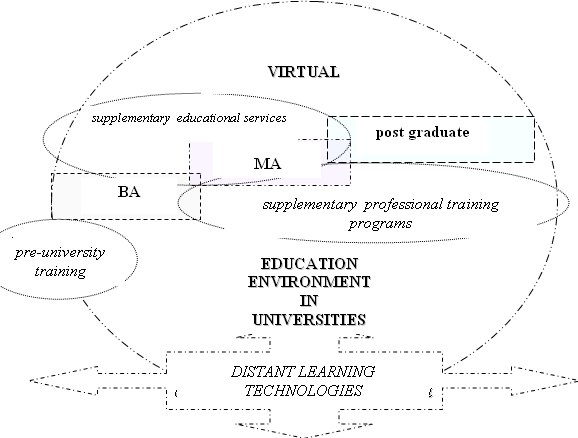
Fig. 1 –Distant learning technologies as a base for virtual education environment
Regarding the methodology, distant learning technology is based, primarily, on a student-centered approach, since the content of education is induced by the demands of students and their abilities. As an integrative part of higher education system such a way of arranging an educational process is also based on the communicative and intercultural approaches. The personality of a teacher, who possesses the necessary and relevant skillset, uses professional methods, principles, forms of organizing educational processes [6], is also of great importance.
Exploring the impact of distant learning technologies on the educational process in high school, we conducted a research in Plekhanov Russian University of Economics in 2011-2015. The research consisted of two studies, one of which (Fig. 2) was aimed at identifying the demand as well as educational and commercial value of some of the foreign language programs provided (including additional professional training programs and supplementary educational services at non-degree foreign language courses). The second study (Fig. 3) was conducted to evaluate the changes in the demand for supplementary professional training programs and supplementary educational services as a result of changes in the motivation and demand among the students after implementing a virtual education environment in the university language programs of supplementary professional and language training.
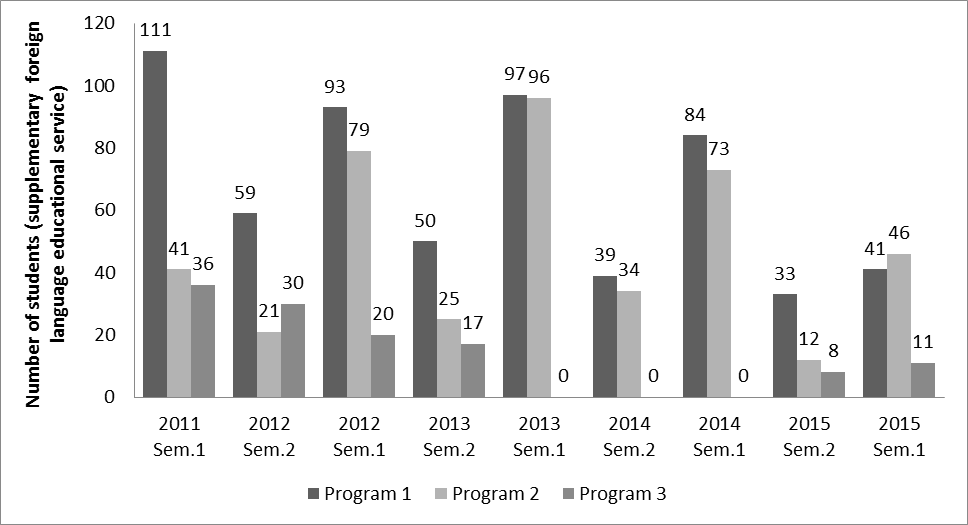
Fig. 2 –Changes in the demand for language programs (supplementary professional training and educational services) provided in Plekhanov Russian University of Economics
Legend to Fig. 2:
Program №1 – supplementary language training programs in English, French, German, Spanish, and Chinese.
Program 2 – language training programs for international exams – IELTS and BEC; compared to the first year there is a growing demand (more than twofold) for this program, mainly due to the requirement of the relevant certificates for student mobility exchange programs.
Program 3 – module language training programs:
- 2011-12 academic year – language training program for taking a school exam (preparation for school graduation exam) and language training program for professional purposes (LSP), express courses ("intercultural communication in business"; "preparation for a job interview", "business correspondence", "negotiation skills"; "the art of presentation", "case method," "express grammar course", "express listening course");
- 2012-13 academic year – language training program with a native speaker;
- 2013-14 academic year – language training program preparing for a post-graduate course;
- 2014-15 academic year – language training program "fundamentals of commerce";
- 2015-16 academic year – "express language training programs developing language skills."
As can be seen from Fig. 2, the module programs of supplementary module training in a foreign language are traditionally in lower demand than programs 1 and 2 due to several reasons. Firstly, programs 1 in non-linguistic universities provide the opportunity to study several foreign languages; secondly, programs 2 aimed at preparing for international exam are required as part of academic mobility; thirdly, program 3 does not appear to be motivational for students if not supported by virtual education resources up to no less than 50%, which provides students with an opportunity to combine work and study ensuring more autonomy. As seen from Fig. 2, implementing virtual education environment based on distant learning technology has increased the number of students in programs 3 in 2015.
In the years 2014-2016 research on the impact of distant learning technologies on the demand for additional educational programs among students was carried out at Plekhanov Russian University of Economics (Fig. 3).
The research conducted through questionnaires and interviews with undergraduate BA, MA students, and alumni showed that distant learning technology in virtual learning environment contributes to improving quality of language education and training, reduces the cost of providing supplementary educational services by increasing the number of hours allocated to self-study. As seen in Fig. 3, the fall in the demand programs (Fig. 2) has reduced.
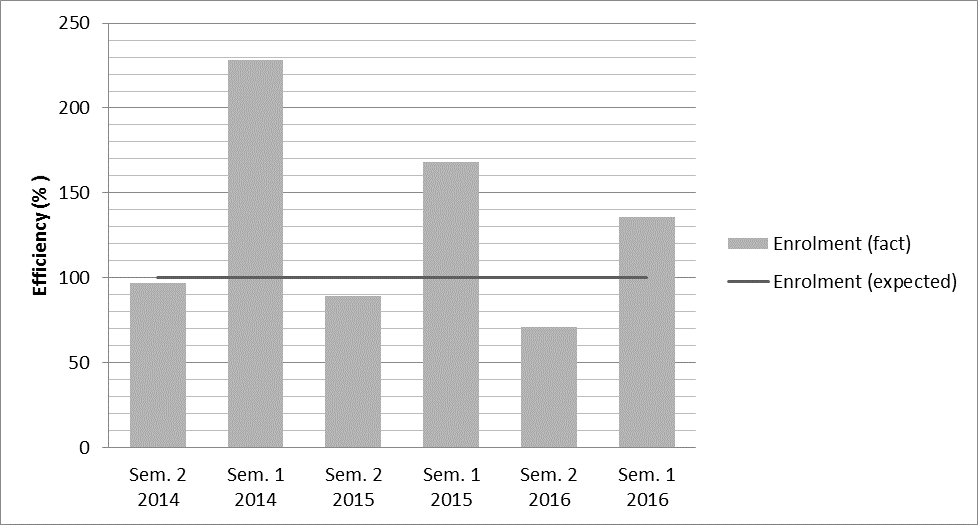
Fig. 3 – Changes in the demand for supplementary module educational programs on implementation of virtual education environment and distant learning technologies
Fig.4 breaks down the allocation of study hours in the module programs with the development of the new courses in response to the demand from the students following the changes in the methodological and technological approaches to module composition by years 2011-2016. The introduction of the distance learning technologies has resulted in the increase in the autonomous learning hours, thus enhancing the flexibility of the course and encouraging the learner autonomy.
The successful integration of distant learning technologies is hardly tangible without efficient technical and administrative provision. As illustrated in Fig. 5 payment for teaching was the priority in pricing the non-degree language modules at the start. Creating virtual education environment incurs some costs, being relatively high at the initial phase of the project implementation (2013-2014). Monitoring the sustainability of the modules requires less technical and human resources investment which affords certain percentage reduction in cost allocation for technical support in further years.
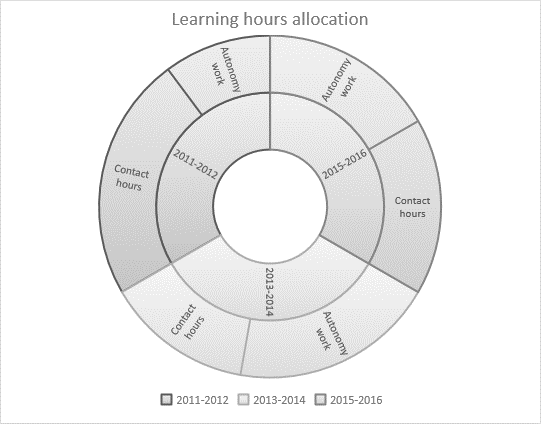
Fig. 4 – Allocation of study hours in module programs in 2011-2016
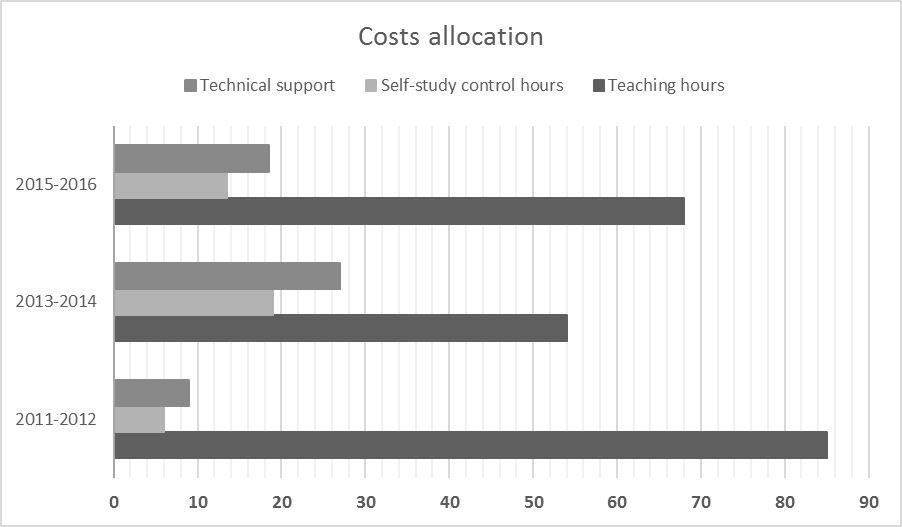
Fig. 5
This research has allowed to identify a number of conditions for successful integration of distant learning technologies in higher education in order to ensure its continuity and availability:
- Compliance with the basic linguodidactic principles, including:
- the principle of personality-based study – core principle in the system of supplementary professional training programs and non-degree educational services promoting the necessary degree of autonomy and arranging efficient self-study;
- the principle of learner autonomy and cognitive-based study;
- conscious-based learning principle and reflective practices;
- the principle of time management in arranging learning processes – planning the time allocated to managing tasks depending on difficulty, anticipated result, strategy, cognitive style; students are taught to recognise the developing skills and competences through the tasks aimed at research and problem-solving.
- Arranging the processes of self-study and ensuring learner autonomy through competence and cognitive based approaches with the help of distant learning technologies. Cognitive competence allows students to carry out the choice of strategies and adapt them according to the objectives of a particular training or life situation. Cognitive approach to study enables to turn students into active participants of the educational processes, who are capable of self-processing, analysis, critical evaluation of acquired knowledge and competences, ready and willing to develop and adapt their own educational strategies.
- The educational process should be organized in such a way that the mentioned above competences are developed at the very start of the learning processes.
- The education process is arranged partly as self-study [1] with the domineering role of distant education technology, allowing to organize self-study and develop cognitive competences in the virtual education environment under monitoring and evaluation of a teacher. The Faculty of Distant Education at Plekhanov Russian University of Economics implements this principle with distant learning system (DLS) (http://sdo.rea.ru/siteFDO/?executorID=MoodleRedirectExecutor&), allowing to organize interaction between teachers and students in a virtual education environment. Having received access to DLS, students can watch video resources, send completed assignments to teachers, work on interactive tests.
- Educational and training materials should be adaptable to the learning environment and students’ requirements [4] in a flexible combination of “invariable (universal, intended for all students) and variable (adaptable) components" [ibid]. In terms of structure such materials consist of the core and the variable modules. Such structure expands its educational capacity as the material is regarded not only as a source of information but also as a resource that provides tools for processing, analysis, interpretation, evaluation, and transformation of knowledge into personal experience of the student, contributing to its intellectual, spiritual and personal growth. This structural organization of materials is integrated in a virtual education environment in the form of an e-course (Fig. 6).
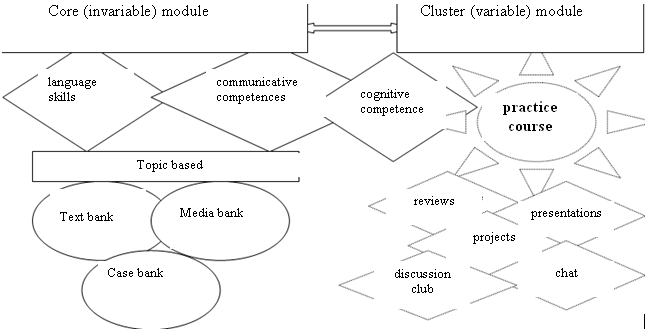
Fig. 6 – E-course structure and components in a virtual education environment
Such an e-course helps to develop language skills and communicative competences within the core module, simultaneously ensures the development of cognitive competence, creates an environment for exchanging information and experience among teachers and students within the cluster module. The cluster module provides an opportunity to adjust materials and information to the need of students and program requirements; both teachers and students are allowed to create, upload, add, and change information within this virtual environment, keeping up with the changing market conditions, increasing educational and commercial value of distant learning technologies [6].
Having emphasized the role of distant learning technologies to ensure the quality of training, increasing motivation, creating flexible educational programs, it is important to note that the overall potential of distant learning technologies has not yet been fully revealed. In our view, implementing distant learning technologies in a virtual education environment in universities would increase motivation and ensure efficiency of language training within BA, MA, post graduate programs as well as for supplementary educational services and supplementary professional training programs. Principles, approaches, and conditions of creating a virtual education environment on the basis of distant learning technologies can be represented as follows (Fig. 7).
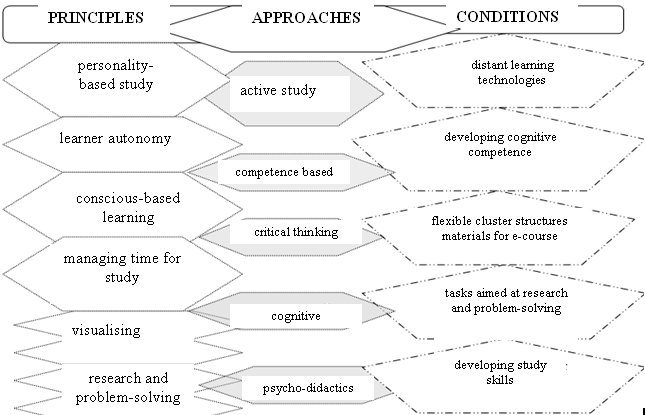
Fig. 7 – Principles, approaches, and conditions of creating a virtual education environment via distant learning technologies
Currently, higher education institutions are implementing various forms of language training in response to students’ demand, creating educational programs in accordance with their requirements. Programs of supplementary professional training and supplementary educational services in high school today are characterized by flexibility and variability. Under these conditions, creating a virtual education environment via distant learning technologies enables to ensure consistency of language training throughout all levels in higher education as well as supplementary professional training and non-degree language programs. Distant learning technologies create an environment where language training as an integral component of the continuity of the education system as a whole becomes accessible, efficient, and adjusted to the requirements of students and teachers. This approach can increase the customer value of supplementary educational services and increase the demand for them due to flexibility and educational value of distant learning technologies.
Список литературы/ References
- Благонравова М.А. Возможности развития критического мышления при использовании метода проектов у студентов экономических вузов на занятиях по иностранному языку / Благонравова М.А., Муратова О.А., Экарева И.Л. // Альманах мировой науки. № 9-1(12). 134 с.
- Бузина Ю.Н. Преподавание иностранных языков в неязыковых вузах // В сборнике:Языковые и профессиональные компетенции преподавателей и студентов в экономическом вузе / Материалы XVII Школы повышения квалификации преподавателей иностранных языков вузов экономического профиля. 2016. С. 16-20.
- Коробова Е.В. Использование компетентностного подхода при обучении иностранному языку в экономическом вузе / Коробова Е.В., Миронова Д.А. // Вопросы прикладной лингвистики. №14. С. 42-49.
- Тарев Б.В. Инновационный потенциал образовательных традиций: учебник иностранного языка открытого типа /Тарев Б.В., Тарева Е.Г. // Вопросы методики преподавания в вузе. № 3. С. 364-373.
- Тростина К.В. Предпринимательская деятельность университета и маркетинговый подход // Человеческий капитал и профессиональное образование. ФГБОУ ВПО «РЭУ им. Г.В. Плеханова». 2014. №4 (12). С.67-74.
- Тростина К.В. Персонал как элемент комплекса дополнительных образовательных услуг в организации высшего образования // В сборнике:Гуманитарное образование в экономическом вузе Материалы IV Международной научно-практической заочной интернет-конференции. С. 405-411.
Список литературы на английском языке / References in English
- Blagonravova M.A. Vozmozhnosti razvitija kriticheskogo myshlenija pri ispol'zovanii metoda proektov u studentov jekonomicheskih vuzov na zanjatijah po inostrannomu jazyku [Developing critical thinking through project method at language classes in universities of economics] / Blagonravova M.A., Muratova O.A., Ekareva I.L. // Al'manah mirovoj nauki [World Science Papers]. 2016. № 9-1(12). 134 p. [In Russian].
- Buzina J.N. Prepodavanie inostrannyh jazykov v nejazykovyh vuzah. [Language teaching in non-linguistic universities]. V sbornike: Jazykovye i professional''nye kompetencii prepodavatelej i studentov v jekonomicheskom vuze [Proceedings: Language and professional competences of teachers and students in non-linguistic universities]. Materialy XVII Shkoly povyshenija kvalifikacii prepodavatelej inostrannyh jazykov vuzov jekonomicheskogo profilja. 2016. P. 16-20. [In Russian].
- Korobova E.V., Mironova D.A. Ispol'zovanie kompetentnostnogo podhoda pri obuchenii inostrannomu jazyku v jekonomicheskom vuze. [Competence based approach in language teaching in a non-linguistic university]. Voprosy prikladnoj lingvistiki. [Applied linguistics]. 2014. – №14. – P. 42-49. [In Russian].
- Tarev B.V., Tareva E.G. Innovacionnyj potencial obrazovatel'nyh tradicij: uchebnik inostrannogo jazyka otkrytogo tipa. [Innovation in teaching traditional practices: open-structure language coursebook]. Voprosy metodiki prepodavanija v vuze. [Teaching methodology in universities]. № 3(17). – Spb. : izdatel'stvo Politehnicheskogo universiteta. [Polytechnic university Publishing]. 2014. P. 364-373. [In Russian].
- Trostina K.V. Predprinimatel'skaja dejatel'nost' universiteta i marketingovyj podhod. [Commercial activities of universities and marketing approaches]. Chelovecheskij kapital i professional'noe obrazovanie. [Hunan assets and professional education]. FGBOU VPO «RJeU im. G.V. Plehanova». [Plekhanov Russian University of Economics Publishing]. 2014. – № 4 (12). – P. 67-74. [In Russian].
- Trostina K.V. Personal kak jelement kompleksa dopolnitel'nyh obrazovatel'nyh uslug v organizacii vysshego obrazovanija [Human resource as a part of supplementary educational services in universities]. V sbornike: Gumanitarnoe obrazovanie v jekonomicheskom vuze Materialy IV Mezhdunarodnoj nauchno-prakticheskoj zaochnoj internet-konferencii. [Proceedings: IV International scientific internet conference Humanities education in a university of economics]. P. 405-411. [In Russian].
